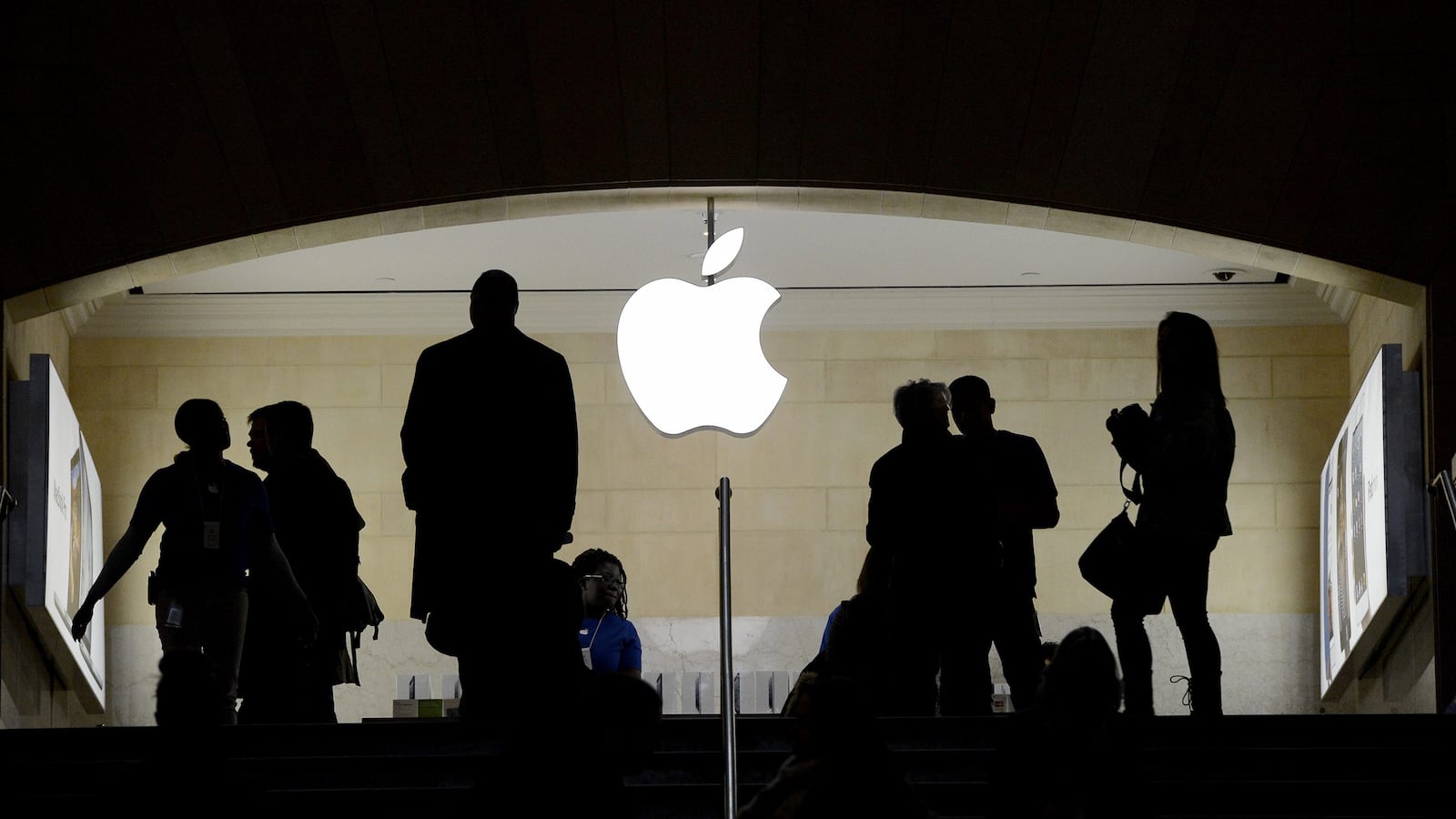Only in America can a company with $145 billion in cash sitting on its books cry poverty. On Friday, a Wall Street Journal article on Apple’s retail operations highlighted the chain’s challenges finding a new leader and as rampant growth declines. A nugget buried within the story, highlighted by Business Insider, noted that the chain is trying to improve results in part by cutting the budget for spending on store supplies like paper and pens.

Now, you could argue that Apple stores don’t need paper and pens. But this is the equivalent of sending out a memo urging employees to reuse paper clips. It’s a decent idea, a good impulse, but it doesn’t address the core problem.
Apple’s core (sorry) problem is the same one that the U.S. economy at large faces. The corporate sector is doing well, the rich are doing great. But broad domestic demand just isn’t materializing to the degree they would hope. In fact, Apple’s retail operations have been a smashing success. Last year, the Journal notes, Apple stores were bringing in $5,971 per square foot, a 17 percent increase from 2011. That’s way more than Tiffany’s. But this year, “sales per square have fallen to $4,542, down 4.5% from $4,754 the same time a year before.” Total sales for the most recent quarter also slumped—“the first drop in year-on-year quarter sales at the stores since 2009, when the company changed how it recognized revenue.”
Apple’s retail operations face a series of challenges. It’s hard to post breakneck growth year after year. It’s running out of new customers. My household of four people has an iMac, and Macbook, three iPhones, two iPads, and an iPod. We’re pretty much Mac’ed out. There’s also competition. Blackberry sat around while Apple ate its lunch, but the rest of the electronics industry is fighting back against Apple dominance. Samsung has been blanketing the airwaves and the web with ads for its smart phones and laptops, while Google’s Android devices are making headway.
Those are problems particular to Apple. But Apple isn’t the only retailer struggling with slack demand. “Where are all the customers?” read the plaintive e-mail from inside Walmart’s executive bunker in February that was leaked to Bloomberg News. “And where is all their money?” The spending pie isn’t growing with sufficient speed, in part because wages haven’t been rising much. Americans by-and-large spend what they earn in wages and salaries. Yes, we borrow a lot to fund our consumption habits. But in the past several years, America’s collective credit card and home equity line of credit balances have shrunk dramatically. We can’t borrow our way to higher consumer activity.
No, if you want to get more cash into the retail channel, you have to get more cash into the consumer channel. That’s happening, but not fast enough. This year, the government has removed some cash from the consumer channel via the payroll tax increase. And companies are putting cash in. Despite all the handwringing about Friday’s jobs report, with just 162,00 new jobs created, about 2.2 million jobs have been added in the past 12 months. That’s respectable. Wages, however, are lagging badly. Corporate America, especially big companies, has been clamping down on labor costs the way Apple is clamping down on paper and pen costs. In July, average weekly earnings were down .4 percent from the month before, and up nearly 2 percent from the year before.
Wages aren’t keeping pace with overall economic growth in large because many companies that could easily afford to pay a little more would simply prefer not to. Apple says it has about 26,000 U.S. retail employees. An article in the New York Times last year suggested they make about $12 an hour. That’s better than McDonald’s pays, but it’s hardly good. And Apple could easily do better. It has $145 billion of cash sitting on its books. It made $6.9 billion in the most recent quarter. Giving each American retail employee a $2,000 annual raise would cost Apple $52 million a year. That’s a tiny, teensy, weensy sliver of its overall cash pile.
Now, were Apple suddenly to increase the wages it paid its employees, they wouldn’t turn around and spend the increase at Apple stores (though they’d spend some). They’d also spend it elsewhere, at restaurants, movie theaters, and furniture and bike stores. But such a move by Apple would help change the environment for the better. When market leaders set norms, other people tend to follow. Since Walmart pays crap wages, other retailers follow suit. It works in the other direction. If Apple were to pay a little more, other retailers in the area that want to recruit and retain the same type of workers would have to pay a little more, too. And so on. Soon enough, there would be slightly more money available for consumer spending, and a portion of it would find its way into Apple’s cash registers. And then one of the world’s richest companies would be able to order as many pens and paper as it wishes.






